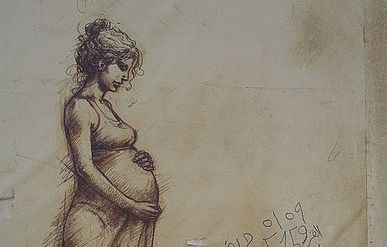the murky ethics of forced sterilisation
Elaine Riddick’s uterus was removed without her consent when she was 14 years old. Doctors sterilised Riddick following the caesarean birth of her son, who was conceived of rape. It was 1968 and the decision to sterilise was authorised by the North Carolina Eugenics Board.
Riddick’s story is just one of an estimated 7,600 cases of forced sterilisation in North Carolina between 1929 and 1974 on the basis of perceived promiscuity and feeble-mindedness by the Eugenics Board.
Last week, North Carolina announced $10 million in its budget to compensate the estimated 2,900 women the Eugenics Board sterilised who are still alive. While this signifies the remorse of the state for its discriminatory policy, it will never right the wrong suffered by those denied their basic reproductive rights as a number of victims and politicians alike have pointed out. However, this decision will hold little sway in dissuading the practice which has effectively continued well into the 21st Century.
Under Eugenics laws bent on eradicating those who were perceived to breed more poverty, at least 60,000 people were forcibly sterilised across the United States from 1907 until 1979. It is sad to say that the practice of forced sterilisation is reportedly still alive and well.
The 1927 Buck v Bell Supreme Court case which upheld Eugenics laws in 32 states is yet to be overturned as its sentiments are still applied to sterilisation of the disabled, finding that ‘involuntary sterilization [sic] is not always unconstitutional if it is a narrowly tailored means to achieve a compelling government interest’.
Women are still subjected to involuntary sterilisation in 14 US states where the practice is legal for those with a mental or developmental disability, however, where involuntary sterilisation is illegal, many state bodies coerce women into the procedure.
Between 2006 and 2010, 148 Californian prison inmates were allegedly sterilised without state approval and a further hundred were subjected to the practice in the 1990s. Pregnant inmates were typically coerced into consenting to tubal ligation on the basis they would likely reoffend and be unable to care for the child or simply had enough children.
Welfare case workers have been reported to compel female clients into sterilisation procedures with promises of regaining custody of removed children after the medical treatment or at the threat of cutting off their various welfare payments. These examples mirror the country’s old Eugenics policies in their aim to decommission reproduction of ‘feeble-mindedness’, ‘deviancy’ and poverty.
It is the disabled who are largely victims of forced sterilisation in Australia. As the Human Rights Commission defines it, forced sterilisation (under Australian law) is ‘the sterilisation of children (regardless of whether they have a disability), and the sterilisation of adults with disability in the absence of their fully informed and free consent’.
For the past twenty years, forced sterilisation has been in and out of Parliament’s agenda. Following on from a 1994 inquiry finding sterilisation of disabled children should only occur where their lives were threatened, the Human Rights Commission found three years later that ‘the law [had] failed to protect significant numbers of children from significant abuse of their fundamental human right to bodily integrity’.
Forced sterilisation is predominantly experienced by disabled women and girls in Australia. The motivations behind decisions to sterilise young disabled women often lie in alleviating the physical and emotional stresses of menstruation or pregnancy, and are perhaps recommended more readily by doctors than temporary methods.
An ethical battle over the forced sterilisation of women and girls with disabilities and similar discriminatory medical procedures such as gonadectomies faced by intersex* individuals still rages on. This is particularly the case as parents take their disabled children abroad to countries, such as Thailand, to have the procedures executed and avoid or override the legal mechanisms required to sanction sterilisation.
In recent weeks, the findings of a federal Senate inquiry into the involuntary or coerced sterilisation of people with disabilities in Australia have been made public. The inquiry found involuntary sterilisation of the disabled should be banned in Australia where the person in question has the ability or could develop the ability to give or withhold their consent.
Importantly, the recommendations move beyond the concept of sterilisation and into sex positivity for the disabled, stating sexual education should become a priority for this demographic ‘with an emphasis on the reasonable and normal aspirations of people with a disability regarding their sexuality and relationships’.
The Senate also hopes to see parents who take their children overseas for forced sterilisation facing criminal charges and stresses ‘managing the pregnancy risks associated with sexual abuse’ should never be factored into a case for sterilisation.
However, the full extent of protection offered by the inquiry’s recommendations has been questioned by some. Disability advocate and ABC Ramp Up editor, Stella Young has written on this issue explaining the capacity to develop consent may be something overlooked as like the capacities for sentience and communication. This cited, it seems perplexing to pursue sterilisation where other options are available. For now in Australia, as in America, forced or coerced sterilisation could be a part of many more disabled people’s lives.
*Full findings regarding forced sterilisation and coerced medical procedures of intersex people will be made available in early August in a specialised report by the Senate.
Do you know anyone who has been coerced into sterilisation?
How should doctors (and carers) face this issue in the 21st century?
Have your say in the comments below!



Thank you for such an interesting and intelligent article! The ethics of this situation are certainly complicated, but you would think that by now, there is a different solution to menstruation than taking out a woman’s uterus. 🙁